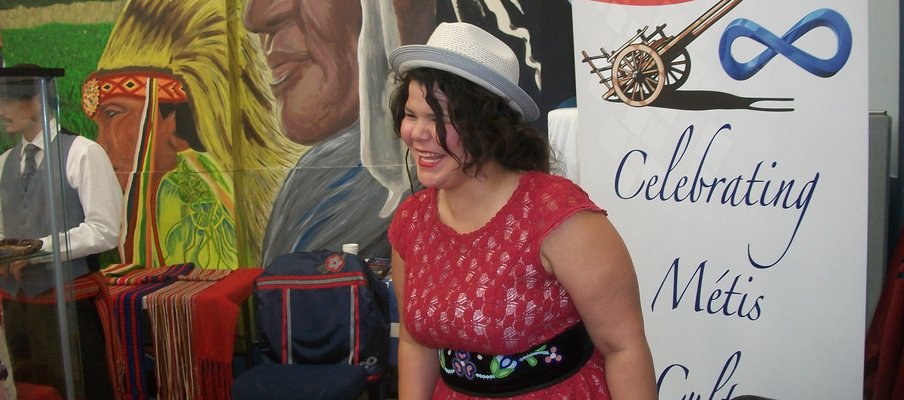
Entertainment, eating, education and engagement create recipe for success at Folkfest’s Indian & Métis Pavilion
In this issue
 Engage - Volume 4, Issue 2, Winter 2014
Engage - Volume 4, Issue 2, Winter 2014
Related Programs
Every year, people in Saskatoon travel around the world learning about different cultures – only to find out what they have in their own backyard.
Since 1980, Saskatoon Folkfest has been educating visitors about the different cultures in the Saskatoon area for three days every year, highlighting their heritage and traditions. For nearly that entire time, the Indian & Métis Pavilion has been a constant presence at the annual festival.
“The second year Folkfest started, the Friendship Centre joined to provide a pavilion,” explains Bill Mint ram, executive director, Saskatoon Indian & Métis Friendship Centre, which still oversees the pavilion. “It’s important to our community. It’s an opportunity to provide education and awareness of who we are as an Aboriginal community.”
For Mintram and his strong contingent of Friendship Centre staff and volunteers, planning for the pavilion begins in January and continues until the beginning of the event in August. Additional assistance is provided by SaskCulture’s Métis Cultural Development Fund, which funds activities that preserve, strengthen and advance
Métis culture and traditions in the province. SaskCulture has been supporting the Indian & Métis Pavilion since 2009.
By the time the event rolls around, the planning pays off for the approximately 6,500 people who visit the pavilion every year.
The festivities include heaping helpings of entertainment and eating. The entertainment options include square dancing, Métis fiddle music, powwow dancing, drumming and hoop dancing, while the menu includes such favourites as bannock, bison burgers and smokies, smoked fish and other traditional foods. “We have some people that say they make an effort to come to this pavilion every year because they love the bannock,” Mintram says.
“We have people that say the same thing about the entertainment. It’s something that the community really enjoys and benefits from.”
However, organizers are careful to ensure the pavilion goes beyond just food and festivities. To that end, it also provides an opportunity to educate visitors. A variety of items with historical and cultural relevance to the Aboriginal community are on display – including beaver skins and other pelts, as well as intricate bead work. A full-size teepee is also constructed outside the Friendship Centre. Interpreters use these items and others as a launching point to engage Folkfest attendees in a discussion about Aboriginal history.
While the entertainment and eating often receive the most attention, the key to the longevity of the Indian & Métis Pavilion also includes equal portions of education and engagement – especially with the majority of visitors being non-Aboriginal.
“As people are coming in the doors, they’re not expecting simply to be entertained, but they’re coming in wanting to learn more about what we do and who we are in the community,” Mintram suggests. “It gives us an opportunity to entertain them, as well as engage them in learning through dialogue and through taking part in workshops and opportunities to dance. We’re engaging people in many different ways.
“For one person, learning to dance might be an excellent opportunity that they’ll never forget. For another person, it might be talking about history to one of the interpreters. For another one, it may be learning about teepee teachings that will stick with them and really give them that ability to better understand who we are and to better understand our culture and our history.”

